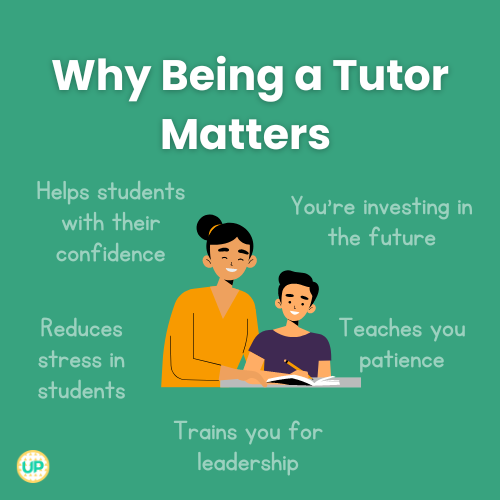Youth Academic Support and Development in Rural and Small Community Libraries
All libraries play an essential role in enabling the educational pursuits and growth of the youth in their communities. Despite common resource limitations, these libraries can adopt low-cost approaches to provide invaluable support for local youth. Let’s explore the value of educational support and youth development in rural libraries, discuss cost-effective strategies, and highlight the myriad benefits for libraries and the young minds they serve.
The Importance and Benefits of Educational Support
1. Homework Assistance Programs
Initiate homework assistance programs that provide a dedicated space and resources for students to complete assignments. Encourage collaboration between library staff and local educators to ensure alignment with school curricula. Sign-ups should be available for in-person and virtual groups as well as one-on-one assistance. If the library has an app (which it should), then the availability of homework assistance should be visible there.
Source: EveryLibrary – Homework Centers in Rural Libraries
2. Literacy Initiatives
Encourage literacy through reading programs, storytelling sessions, and literacy-focused events. Partnering with local schools to enhance the impact and reach of these programs can result in an increased enjoyment of education. When youth enjoy learning, they are less likely to give up on their education. The better a person can read for comprehension, the better off they will be as functional adults in their communities.
Source: Public Libraries Online – Building Literacy in Small Communities
 3. Digital Literacy Workshops
3. Digital Literacy Workshops
Present cost-effective virtual digital literacy workshops to teach fundamental computer and internet skills. These workshops should include basics such as internet navigation, online safety, and using productivity tools, preparing youth for the digital demands of their futures. Granted, many kids learn how to use technologies long before they reach adolescence, so it may be helpful to have another program where they volunteer to help teach aged patrons how to use modern technology. Generations teaching one another are also great for reinforcing community bonds.
Source: ALA – Digital Literacy Resources for Libraries
4. STEM Programs
Introduce STEM (Science, Technology, Engineering, and Mathematics) programs that involve hands-on activities and experiments. Collaborate with local professionals or enthusiasts to lead workshops, showcasing the practical applications of STEM fields.
Source: TechSoup for Libraries – STEM Programming Ideas
Low-Cost Approaches for Youth Development
5. Volunteer-Based Tutoring Programs
Leverage community resources by establishing volunteer-based tutoring programs. Local high school or college students and community members with expertise in specific
These relationships can be very beneficial for reinvigorating community ties. These programs must be consistent and regular in occurrence for the sake of continued learning. Younger kids thrive on consistency (in most cases), so it’s essential to have volunteers committed to their younger peers.
Source: VolunteerMatch – Youth Tutoring Programs
6. Community Partnerships
Forge partnerships with local businesses, community organizations, and professionals to expand the range of educational opportunities. These partnerships can bring in guest speakers, offer field trips, or provide mentorship programs. For older students, these partnerships could also offer internships and job shadows to help high schoolers prepare for their futures. The library could also utilize the meetup website to establish these groups for outings.
Source: Urban Libraries Council – Community Partnerships
 7. Maker Spaces on a Budget
7. Maker Spaces on a Budget
Create low-cost maker spaces that encourage creativity. Utilize readily available materials like recycled items, cardboard, and basic craft supplies to foster a hands-on learning environment.
Source: Public Libraries Online – Budget-Friendly Makerspaces
8. Book Swaps and Donations
Establish book swap programs or accept book donations to enhance library collections. Be sure to establish clear and simple guidelines for the condition of donations and any items not needed. Encourage community members to share their favorite books, promoting a sense of communal ownership over the library’s resources.
Source: American Libraries Magazine – Book Swap Programs
9. Community Engagement and Cohesion
Educational support programs strengthen community ties by engaging families and youth. They create a sense of shared responsibility for education, encouraging cohesion and a collective commitment to the success of local students.
Source: ALA – Community Engagement Toolkit
 10. Enhanced Library Relevance
10. Enhanced Library Relevance
By actively supporting youth education, rural libraries can position themselves as indispensable community resources. This relevance not only attracts more patrons but also enhances the library’s standing when seeking grants and support.
Source: EveryLibrary – Making Your Library Relevant
Educational support and youth development initiatives in rural and small community libraries are essential components of community growth. Despite budget constraints, these libraries can implement low-cost approaches that have a profound and lasting impact on the educational landscape of their regions. Through collaboration, creativity, and a commitment to empowering local youth, rural libraries can cultivate brighter futures for future generations.
